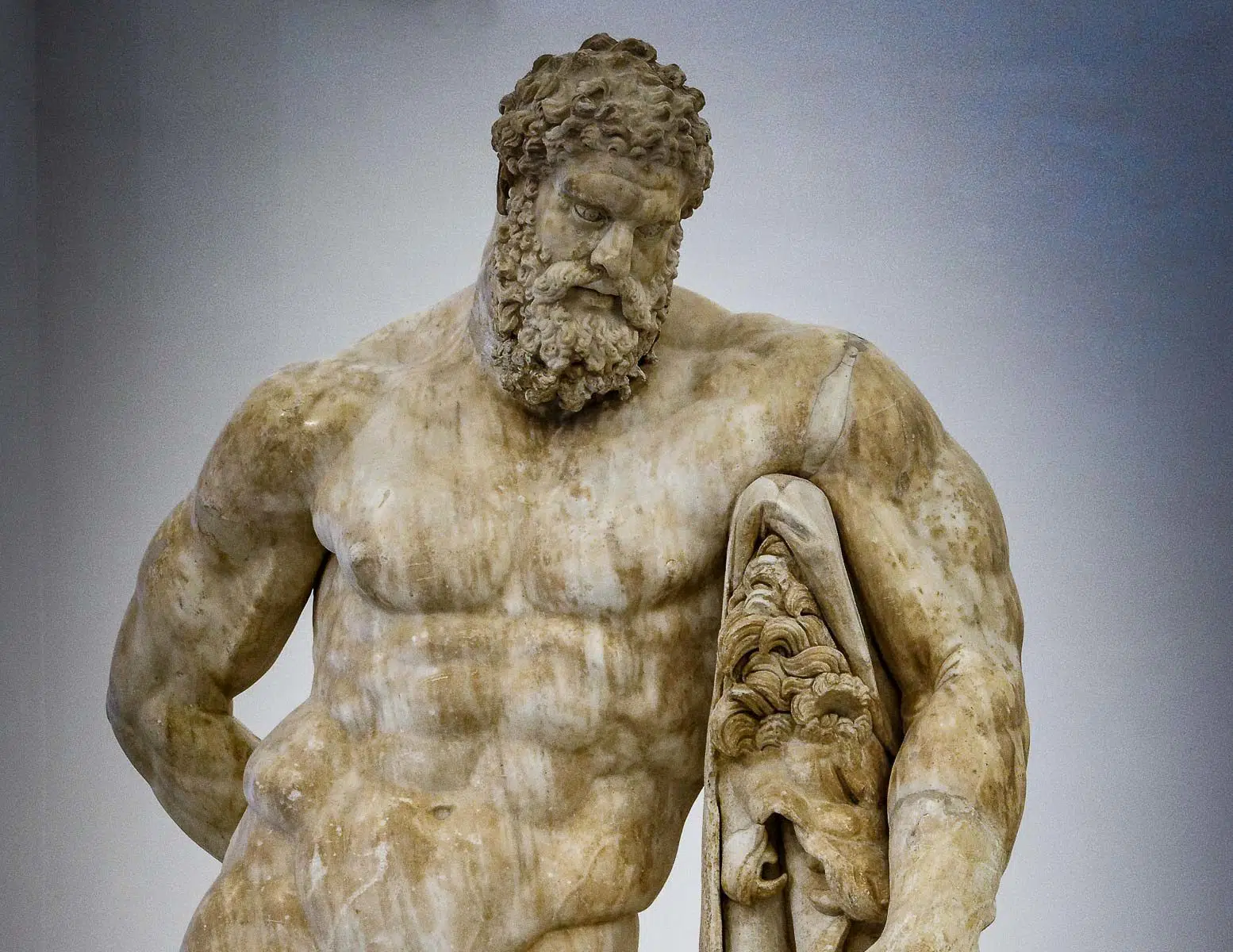
The Pillars of Hercules appear in ancient Greek mythology in a variety of different settings. They are mentioned in the context of Atlantis, various quests, and of course, in the stories of Hercules himself. They are even mentioned in the context of historical descriptions of the world. All this raises the question, what actually were the Pillars of Heracles?
The Pillars as Metaphorical Limits
One of the very earliest references to these pillars in Greek literature comes from Pindar. He was a Greek poet who lived in c. 500 BC. In Olympian 3, he describes the athletic excellence of Theron of Acragas. In this context, he says:
“If water is best and gold is the most honored of all possessions, so now Theron reaches the farthest point by his own native excellence; he touches the pillars of Heracles. Beyond that the wise cannot set foot; nor can the unskilled set foot beyond that.”
Here, it seems that Pindar was using the phrase ‘Pillars of Hercules’ as an expression denoting the outermost limit of something. His use of the phrase ‘beyond that the wise cannot set foot’ indicates that he was not merely talking about athletic limits, but limits in general.
The Pillars as Geographical Limits
In line with this, the expression ‘Pillars of Hercules’ was also used in the context of geographical limits. In fact, it seems very likely that the metaphorical meaning came from the more literal geographical one.
Most references to the Pillars of Hercules in ancient Greek literature place them in the region of Spain. This makes sense, because Spain was, for a long time, the limit of Greek knowledge of the western world. It also marked the boundary of the Mediterranean Sea, the sea to which the Greeks belonged. Therefore, it makes sense that they would place the pillars in that area.
Specifically, the Pillars of Heracles were most commonly identified with the Strait of Gibraltar – or rather, with the two major mountains on either side of this strait.
What Was The Origin of the Pillars of Hercules?
The idea that the Pillars of Hercules were used to mark the limit of Greek geographical knowledge also makes sense when we consider the story of how the pillars were created. During Hercules’ tenth labor, he had to steal the cattle of Geryon. These cattle lived with Geryon on the island of Erytheia, known for being one of the westernmost islands of all.
The cattle themselves were stained red by the setting sun. Again, we see the connection with the idea of the world’s limits, since the setting sun represents the extreme west.
According to some versions of this legend, it was during this event that the Pillars of Heracles came into existence. The second-century Bibliotheca by Pseudo-Apollodorus tells us the following:
“He [Hercules] erected as tokens of his journey two pillars over against each other at the boundaries of Europe and Libya.”
Therefore, the Pillars of Hercules were specifically associated with Heracles’ journey to the westernmost limits of the world.
Multiple Pillars of Hercules
However, the Pillars of Hercules were not only connected with the concept of westernmost limits. As shown by Pindar’s quote, the expression came to be used to represent limits in general. Therefore, it is no surprise that the term ‘Pillars of Hercules’ was sometimes also applied to other aspects of the limits of Greek geographical knowledge.
For example, Isocrates, an Athenian writer who lived in c. 400 BC, wrote that Heracles set up some pillars to the far east of Greece. He explains that Hercules had attacked the city of Troy and then set up the Pillars of Hercules in the vicinity. Isocrates specifically states that this was ‘to mark the boundaries of the territory of the Hellenes’.
This is slightly different to representing the limits of Greek geographical *knowledge* (after all, even according to Greek mythology, the Greeks had explored further east than Troy prior to the time of Heracles, so Troy was not the limit of their geographical knowledge at that time) but it is a fairly similar concept.
Supporting this, the fourth century grammarian Servius wrote:
“For we read of the columns of Hercules both in Pontus [the Black Sea] and in Spain.”
This seems to connect the pillars with the Bosporus, the entrance to the Black Sea, not far from Troy.
Pillars of Hercules to the North and the South
If the Pillars of Hercules were used to represent the westernmost and easternmost bounds of Greek territory or geographical knowledge, then is it not also logical that they may have been used for the northernmost and southernmost limits too?
Although these northern and southern pillars were not nearly as popular as the ones to the west and east, there do appear to be some references to them. The Roman historian Tacitus, writing shortly after 100 AD, referred to the fact that there were said to be Pillars of Heracles where the Rhine emptied into the North Sea. This would link in well with the idea of the northernmost limit of Greek geographical knowledge.
In terms of Greek territory, rather than geographical knowledge, some researchers have speculated that the promontories either side of the Gulf of Laconia were also known as the Pillars of Hercules. Since these promontories are the southernmost part of Greece, this would make sense.
The Greek historian Strabo recorded the fact that there were two islands close to the Pillars of Hercules. This does not fit the Strait of Gibraltar, nor the Bosporus, but it does fit the Gulf of Laconia.
See all the latest news from Greece and the world at Greekreporter.com. Contact our newsroom to report an update or send your story, photos and videos. Follow GR on Google News and subscribe here to our daily email!



